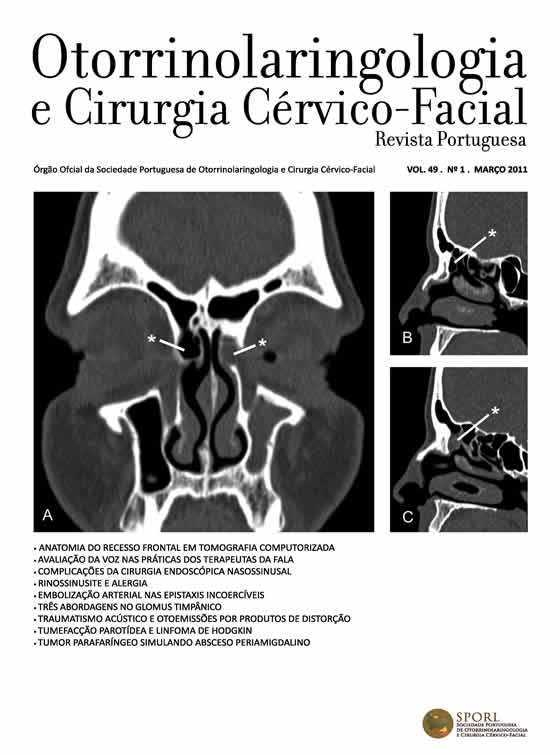Acoustic evaluation of voice in the practice of the portuguese speech therapists
DOI:
https://doi.org/10.34631/sporl.147Keywords:
Professional practices, methods of vocal evaluation, acoustic methodAbstract
Introduction: The use of acoustic method in the practice of the Portuguese Speech Therapists has grown in voice diagnosis. A study was conducted to get insight the acoustic method use and the combination with other methods of voice diagnosis (instrumental and non-instrumental).
Material and Methods: This study was based on a questionnaire about voice evaluation methods that was sent to a group of Speech Therapists via email and its posterior statistic treatment.
Results: In a Likert scale with five levels, the non-instrumental methods are moderately (level three) or very (level two) used and the instrumental methods are moderately (level three) or little (level four) used. The acoustic method is very (level two) used for all expected tasks in vocal evaluation, in particular to measure the results of therapy.
Conclusions: It can be concluded that Portuguese Speech Therapists mainly use non-instrumental methods and the acoustic method is the most used among the instrumental methods.
Downloads
References
Behrman A. Common practices of voice therapists in the evaluation of patients. J Voice 2005; 19(3): 454-69.
Schwartz S, Cohen S, Daily S, Rosenfeld R, et al.. Clinical practice guideline: hoarseness (dysphonia). Otolaryngology–Head and Neck Surgery 2009; 141: 1-31.
Dejonckere PH, Bradley P, Clemente P, Cornut G, et al.. A basic protocol for functional assessment of voice pathology, especially for investigating the efficacy of (phonosurgical) treatments and evaluating new assessment techniques. Eur Arch Otorhinolaryngol 2001; 258: 77–82.
Bhuta T, Patrick L, Garnett JD. Perceptual evaluation of voice quality and its correlation with acoustic measurements. J Voice 2004; 18: 299-304.
Eadie T, Doyle F. Classification of dysphonic voice: acoustic and auditory perceptual measures. J Voice 2005; 19: 1-14.
Ma EP-M, Yiu E.M-L. Multiparametric evaluation of dysphonic severity. J Voice 2006; 20: 380-90.
Côrtes MG, Gama ACC. Análise visual de parâmetros espectrográficos pré e pós-fonoterapia para disfonias. Rev Soc Bras Fonoaudiol 2010; 15(2): 243-9.
Camargo Z, Pinho S. Introdução à análise acústica da voz. In: Pinho, S. (org). Tópicos em Voz. Rio de Janeiro: Guanabara-Koogan; 2001.
Behlau M. Voz: O livro do especialista. Rio de Janeiro: Revinter; 2006.
Speyer R. Effects of voice Therapy: a systematic review. J Voice 2006; 22(5): 565-80.
Jackson-Menaldi M. La voz patologica. Buenos Aires: Edital Médica Panamericana S.A.; 2002.
Kent R. The MIT encyclopedia of communication disorders. Cambridge: The MIT Press; 2004.
Zagolski O, Carlson E. Electroglottographic measurements of glottal function in vocal fold paralysis in women. Clin. Otolaryngol 2002; 27:246–53.
Guimarães I. A ciência e a arte da voz humana. Alcabideche Escola Superior de Saúde do Alcoitão (ESSA); 2007.
Perlman AL, Grayhack JP. Use of the electroglottograph for measurement of temporal aspects of the swallow: preliminary observations. Dysphagia 1991; 6(2): 88-93.
Rontal E, Rontal M, Rolnick M. Objective evaluation of vocal pathology using voice spectrography. Ann Otol Rhinol Laryngol 1975; 84: 662-71.
Hammarberg B. Voice research and clinical needs. Folia Phoniatr Logop 2000; 52: 93-102.






